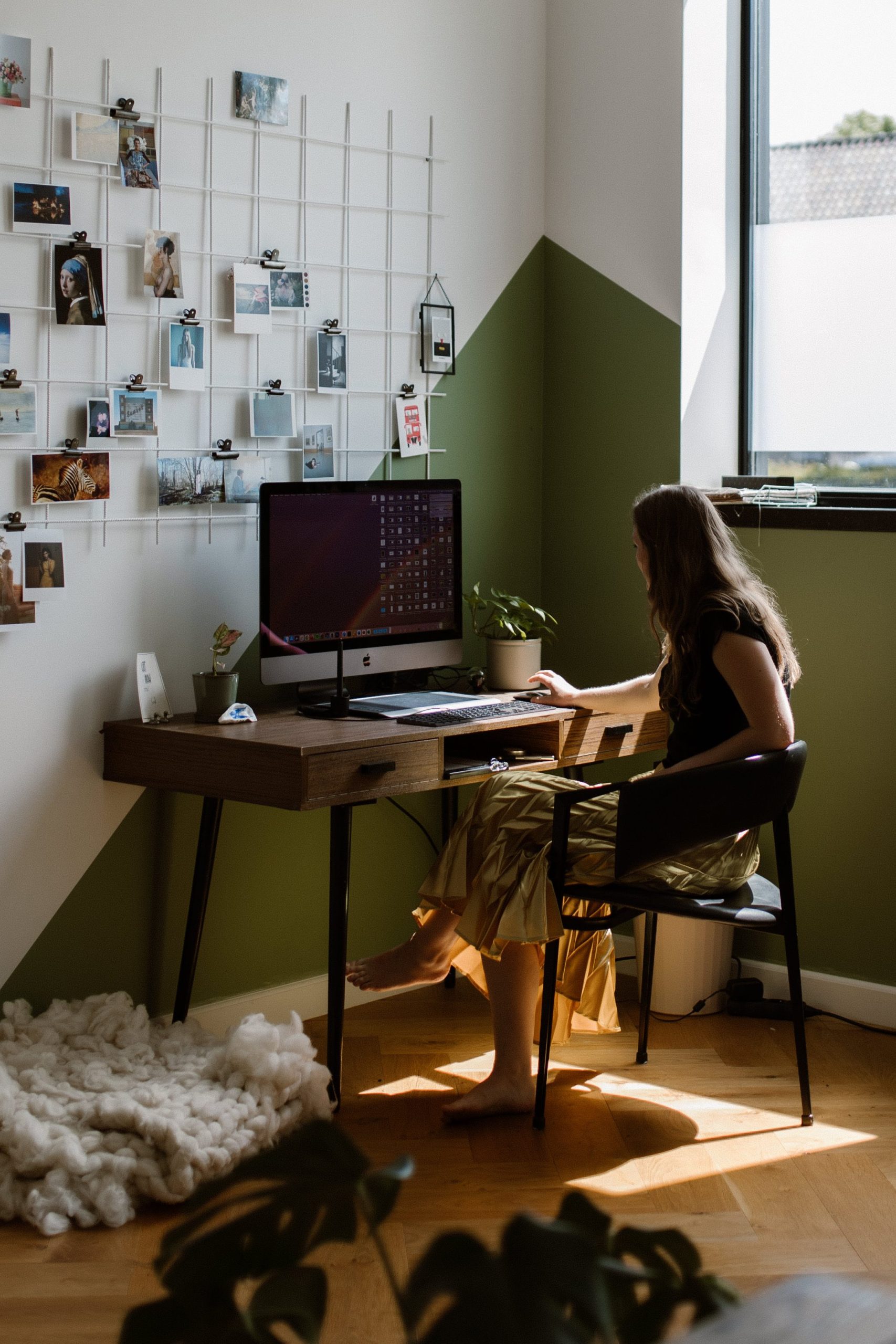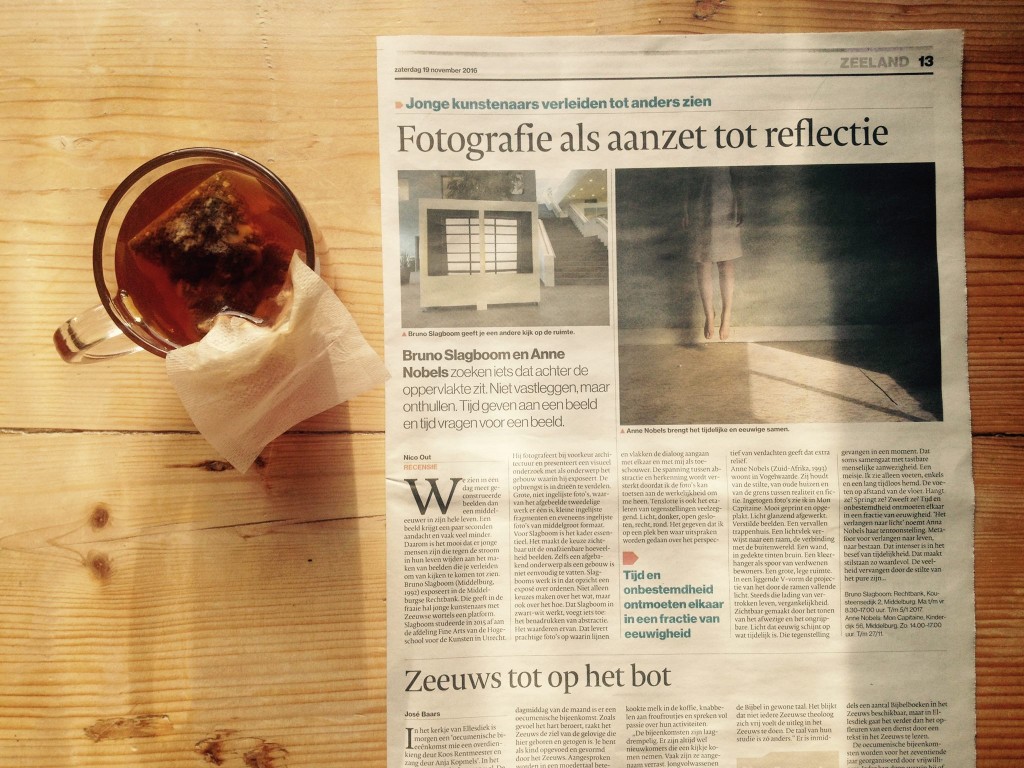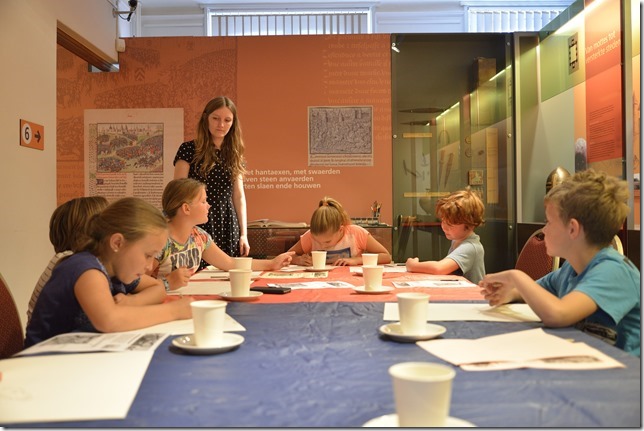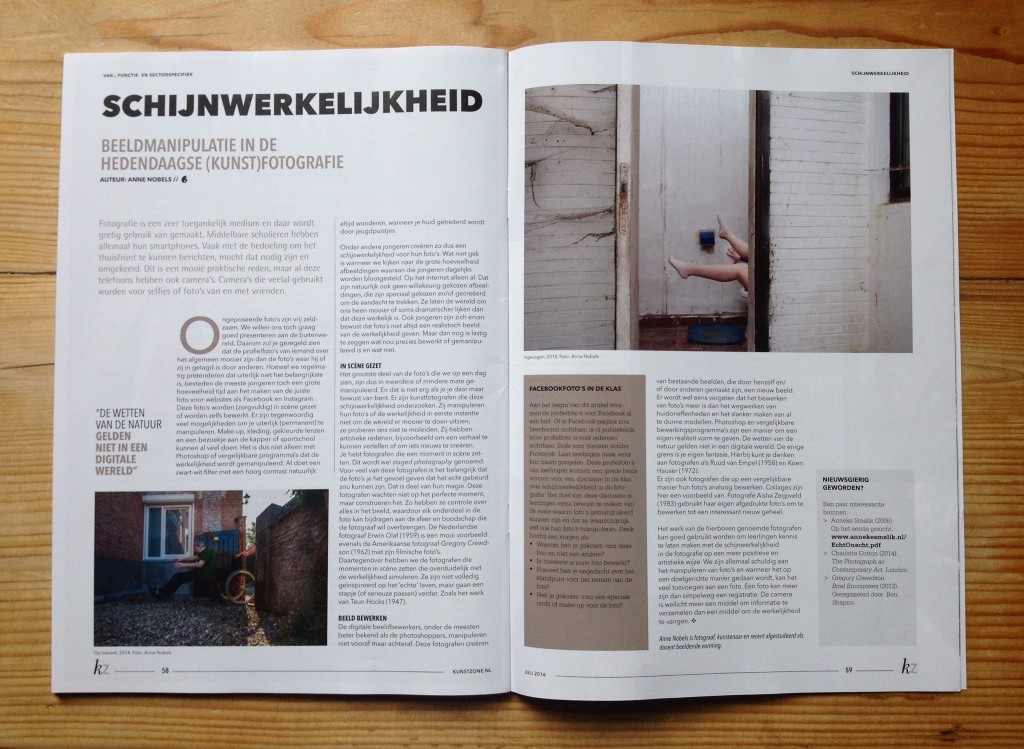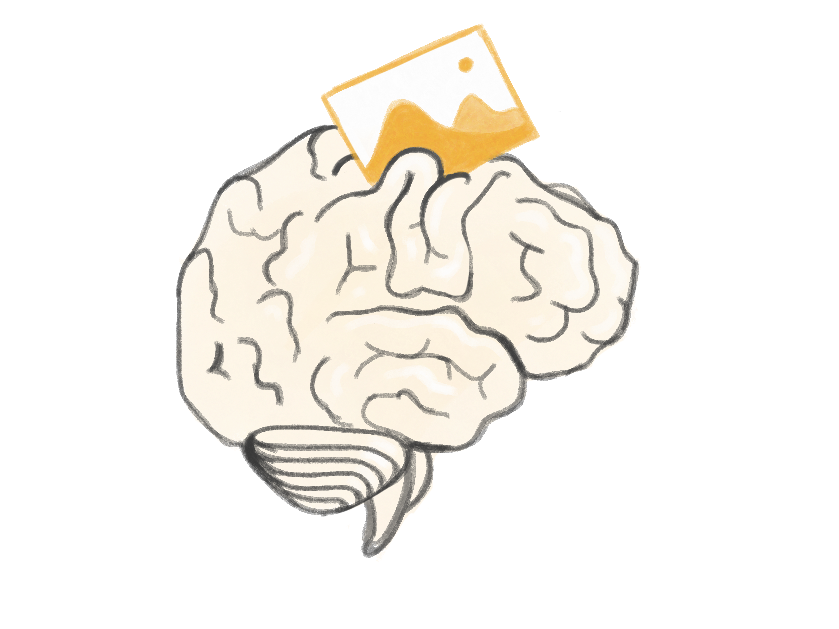‘Luctor et Emergo’, the motto of Zeeland. It turns out to be a motto that fits me perfectly. If I haven’t struggled for my art, if it’s just click and done, something always feels off. It doesn’t need to hurt, just beeing uncomfortable will work. And this aplies to almost all achievements I’m proud of. My diploma’s, my house, my personal / work-related growth and even my relationships.
Now back to the Zeeland. The sea is a constant source of inspiration, but not necessarily in a literal sense. The salty air, the sound of the waves, and the slippery clay banks have an instant calming effect on me. When I’m stuck, when I can’t find a way out, I go to the sea. But if it’s really cold, a hot shower does just fine, because I don’t function well in the cold.
When I’m stuck, when I can’t find a way out,
I go to the sea


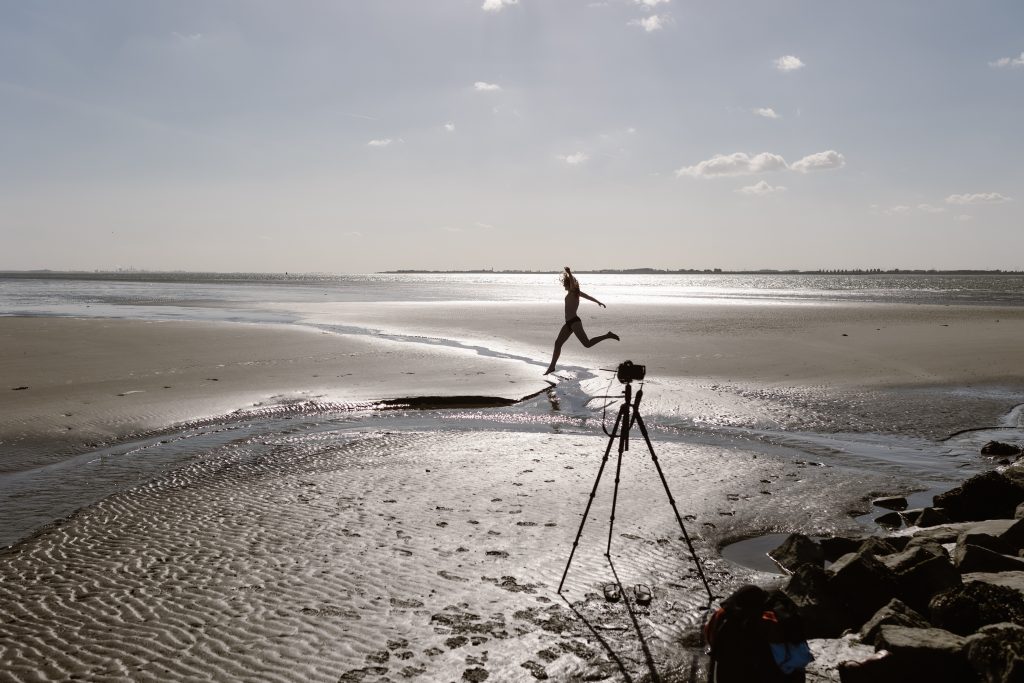
A lot of my photographs are made with a tripod and a 10-second timer. Setting the camera, locking in my composition, testing a few poses and then much running back and forth. Counting the seconds in my head, trying to think of my pose while also considering my hair and facial expressions. Multitasking at its best! The limitations of this way of working help me be more creative. And quite a few of the ‘failed’ photos end up being the best ones. I enjoy working alone, but my husband often joins me during shoots to assist me. Not everything can be done with just a tripod, a 10-second timer, and myself. And no, I generally don’t use a remote control. I’ve ruined many within a month of buying them by dropping them (read: throwing) or letting them fall into water. Including my phone, which has ended up in saltwater twice and turned out not to be waterproof—or at least, not saltwater-proof…
a tripod, a 10-second timer
and myself
So, half of the time, my husband comes along. Something he now does with great pleasure, but it wasn’t always like that. When we started dating and, a year later, I started experimenting with nude posing in landscapes for a new series, he wasn’t a fan. “I don’t want people to see you like that.” But I needed it to express the vulnerability of the themes I wanted to discuss. It took him some time to get used to the idea that I wasn’t going to change my mind. By seeing the work of other artists who use nudity in a non-sexual way and having open conversations about it, his opinion changed. So much so that he himself is now regularly used by me as a nude model!
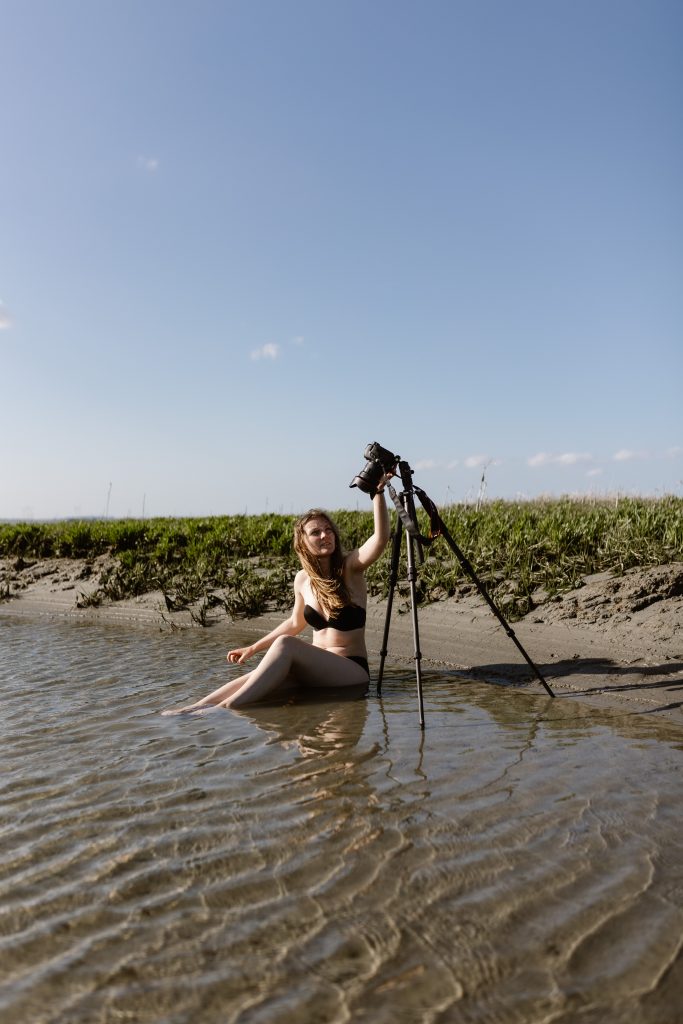
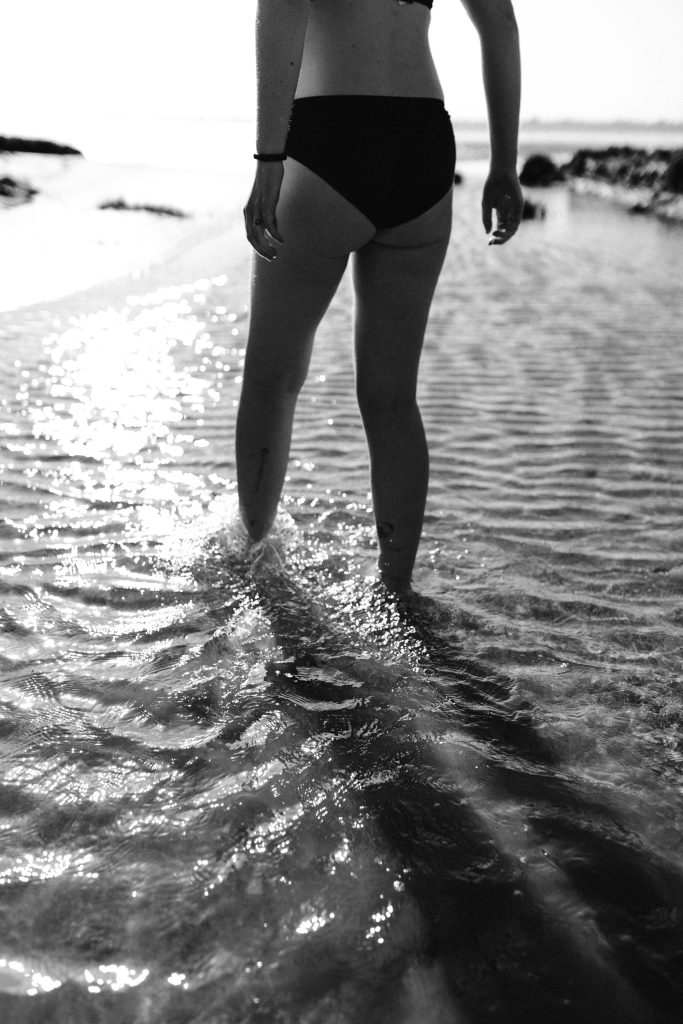
Once the photos are taken, I sit behind the computer at home for editing. My final images often consist of multiple photos. On location, I already take this into account, shooting a lot of extras—extra surroundings, extra poses, shifted focus. This way, I can assemble the perfect image afterwards. Still, I think it’s important that you can’t tell it’s been edited, so that they don’t lose their realistic and poetic character. I see Photoshop as a tool to realize my vision of reality, much like a painter uses a brush.
